The Mali Portal
Mali (/ˈmɑːli/ ⓘ; Bambara pronunciation: [ma.li]), officially the Republic of Mali, is a landlocked country in West Africa. Mali is the eighth-largest country in Africa, with an area of over 1,241,238 square kilometres (479,245 sq mi). The country is bordered on the north by Algeria, on the east by Niger, on the northwest by Mauritania, on the south by Burkina Faso and Côte d'Ivoire, and on the west by Guinea and Senegal. The population of Mali is 21.9 million,0 67% of which was estimated to be under the age of 25 in 2017. Its capital and largest city is Bamako. The country has 13 official languages, of which Bambara is the most commonly spoken. The sovereign state of Mali consists of 19 regions; its borders on the north reach deep into the middle of the Sahara Desert. The country's southern part is in the Sudanian savanna, where the majority of inhabitants live, and both the Niger and Senegal rivers pass through. The country's economy centres on agriculture and mining. Its most prominent natural resources include gold, which it is the third largest producer of in Africa, as well as salt. Mali was once part of three extremely powerful and wealthy West African empires that controlled trans-Saharan trade: the Ghana Empire (for which Ghana is named), the Mali Empire (for which Mali is named), and the Songhai Empire. At its peak in 1300, the Mali Empire was the wealthiest country in Africa and one of the wealthiest on earth, with its 14th-century emperor Mansa Musa believed to be one of the wealthiest individuals in history. Besides being an economic powerhouse, medieval Mali was a centre of Islam, culture and knowledge, with Timbuktu becoming a renowned place of learning with its university, one of the oldest in the world still active. The expanding Songhai Empire absorbed the empire in 1468, followed by a Saadian army which defeated the Songhai in 1591. In the late 19th century, during the Scramble for Africa, France seized control of Mali, making it a part of French Sudan; as the Sudanese Republic, a brief federation with Senegal was formed, achieving independence in 1960. After Senegal's withdrawal, the Republic of Mali was established. After a long period of one-party rule, a coup in 1991 led to a new constitution and the establishment of Mali as a democratic, multi-party state. In January 2012, an armed conflict broke out in northern Mali, in which Tuareg rebels took control of a territory in the north, and in April declared the secession of a new state, Azawad. The conflict was complicated by a military coup in March 2012 and later fighting between Tuareg and other rebel factions. In response to territorial gains, the French military launched Operation Serval in January 2013. A month later, Malian and French forces recaptured most of the north, although the conflict continued. Presidential elections were held on 28 July 2013, with a second-round run-off held on 11 August, and legislative elections were held on 24 November and 15 December 2013. In the early 2020s, Mali experienced two military takeovers by Assimi Goïta. (Full article...) Selected article -The Dogon are an ethnic group indigenous to the central plateau region of Mali, in West Africa, south of the Niger bend, near the city of Bandiagara, and in Burkina Faso. The population numbers between 400,000 and 800,000. They speak the Dogon languages, which are considered to constitute an independent branch of the Niger–Congo language family, meaning that they are not closely related to any other languages. The Dogon are best known for their religious traditions, their mask dances, wooden sculpture, and their architecture. Since the twentieth century, there have been significant changes in the social organisation, material culture and beliefs of the Dogon, in part because Dogon country is one of Mali's major tourist attractions. (Full article...)General images -The following are images from various Mali-related articles on Wikipedia.
CategoriesCategory puzzle Select [►] to view subcategories
Mali Mali-related lists Buildings and structures in Mali Malian culture Economy of Mali Education in Mali Environment of Mali Geography of Mali Government of Mali Health in Mali History of Mali Organisations based in Mali Malian people Politics of Mali Society of Mali Mali stubs Cities and townsWikiProjectsTopics in MaliSelected pictureRelated portalsMap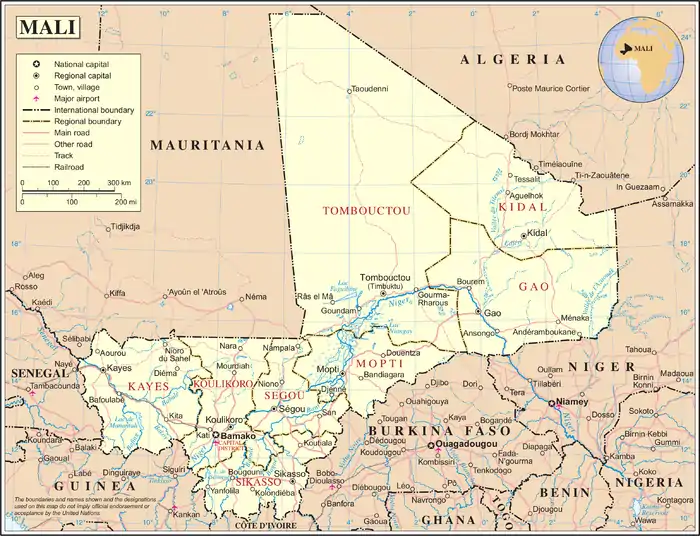 Associated WikimediaThe following Wikimedia Foundation sister projects provide more on this subject:
Sources
Discover Wikipedia using portals
| ||||

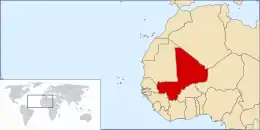
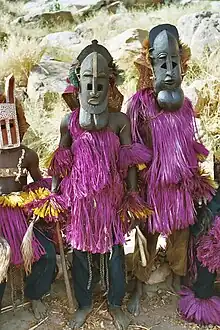

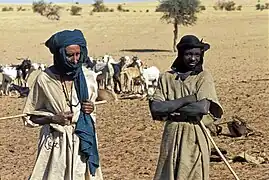


.jpg.webp)




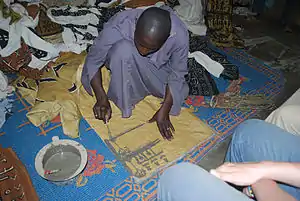






.jpg.webp)
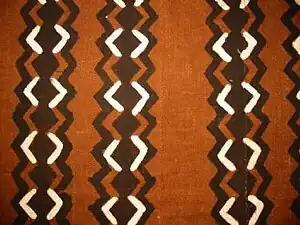
.jpg.webp)
.jpg.webp)




.jpg.webp)
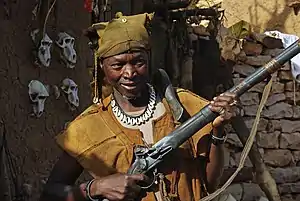



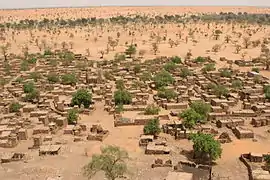



.svg.png.webp)

.jpg.webp)

.jpg.webp)

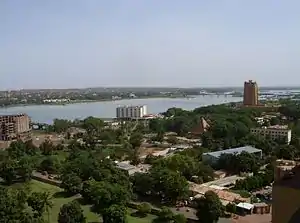
_Mali.jpg.webp)
